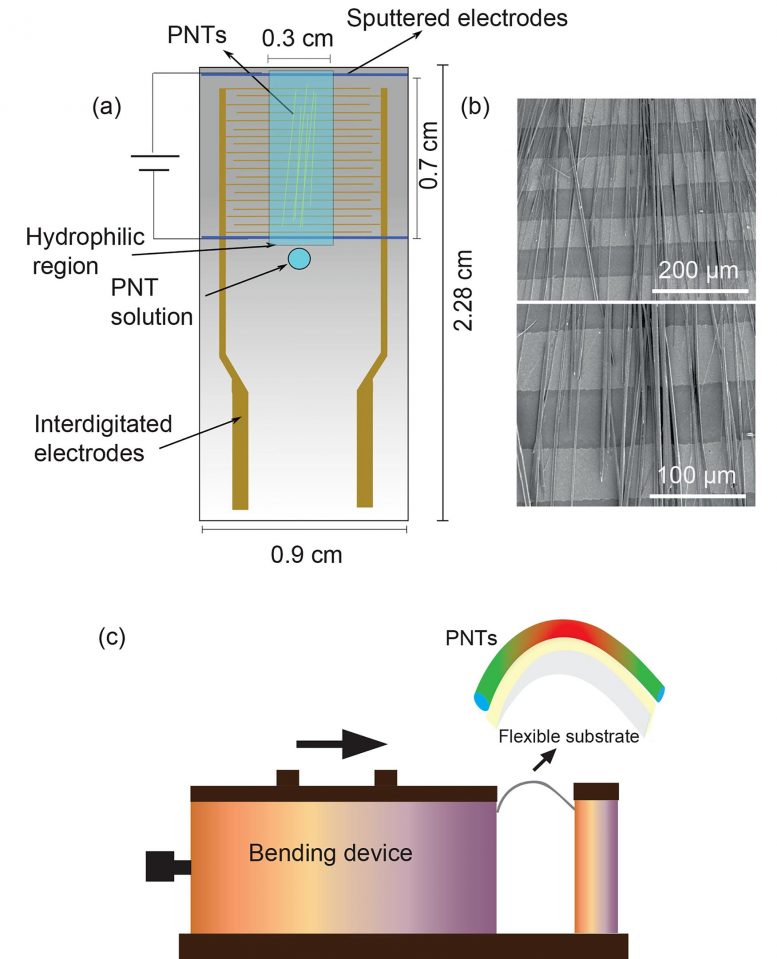From AMERICAN INSTITUTE OF PHYSICS
Self-assembled peptides, when aligned, show great promise for electricity generation.
Nanogenerators capable of converting mechanical energy into electricity are typically made from metal oxides and lead-based perovskites. But these inorganic materials aren’t biocompatible, so the race is on to create natural biocompatible piezoelectric materials for energy harvesting, electronic sensing, and stimulating nerves and muscles.
University College Dublin and University of Texas at Dallas researchers decided to explore peptide-based nanotubes, because they would be an appealing option for use within electronic devices and for energy harvesting applications.
In the Journal of Applied Physics, from AIP Publishing, the group reports using a combination of ultraviolet and ozone exposure to generate a wettability difference and an applied field to create horizontally aligned polarization of nanotubes on flexible substrates with interlocking electrodes.

A group of researchers has explored peptide-based nanotubes and, in the Journal of Applied Physics, reports using a combination of ultraviolet and ozone exposure to generate a wettability difference and an applied field to create horizontally aligned polarization of nanotubes on flexible substrates with interlocking electrodes. The work will enable the use of organic materials more widely. This image shows optical (a-c) and lateral piezoresponse force microscopy (LPFM) phase images (d-f) of the peptide nanotubes on interlocking electrode substrates: (a, d) without alignment, (b, e) aligned using both electric field and UV/ozone, and (c, f) aligned PNTs with graphene oxide (GO) using both electric field and UV/ozone. Credit: Sawsan Almohammed
“The piezoelectric properties of peptide-based materials make them particularly attractive for energy harvesting, because pressing or bending them generates an electric charge,” said Sawsan Almohammed, lead author and a postdoctoral researcher at University College Dublin.
There’s also an increased demand for organic materials to replace inorganic materials, which tend to be toxic and difficult to make.
“Peptide-based materials are organic, easy to make, and have strong chemical and physical stability,” she said.
In the group’s approach, the physical alignment of nanotubes is achieved by patterning a wettability difference onto the surface of a flexible substrate. This creates a chemical force that pushes the peptide nanotube solution from the hydrophobic region, which repels water, with a high contact angle to the hydrophilic region, which attracts water, with a low contact angle. Read more from Sci Tech Daily
Read other potential breakthrough technology stories from News Without Politics




